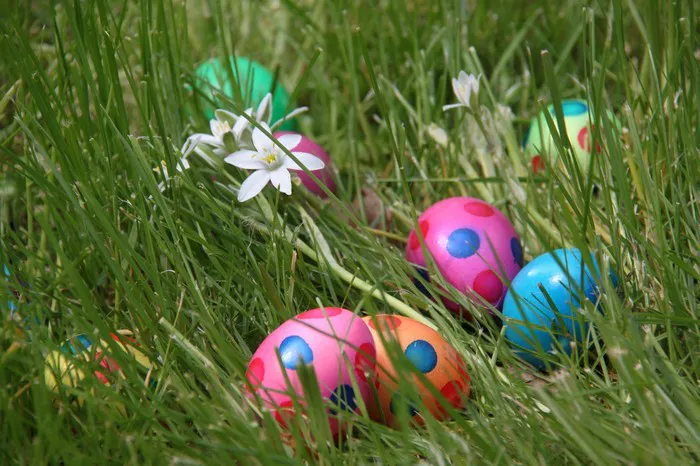As the flowers bloom and the days grow longer, Easter heralds the arrival of spring with its colorful festivities and cherished traditions. From decorating eggs to indulging in chocolate bunnies, this holiday brings families together in joyous celebration. In this article, we’ll explore a delightful blend of Easter fun facts and jokes, offering readers a lighthearted glimpse into the history, traditions, and symbols of this beloved holiday.
Balance of Facts and Jokes: Crafting an Egg-cellent Blend
Easter is a time for both learning and laughter, and striking the perfect balance between informative facts and humorous jokes ensures an engaging and enjoyable reading experience. By weaving together fascinating tidbits of Easter history, cultural traditions, and religious significance with playful quips and puns, we create a tapestry of entertainment that appeals to readers of all ages.
Easter Origins and History: Unveiling the Mystery
To understand Easter’s significance, we must delve into its origins and historical roots. Derived from the Christian celebration of the resurrection of Jesus Christ, Easter has evolved over centuries, incorporating elements of pagan spring festivals and cultural traditions from around the world. Its name is believed to have been derived from the Anglo-Saxon goddess Eostre, symbolizing fertility and rebirth.
Fun Fact: The date of Easter changes each year and is determined by the lunar calendar. It falls on the first Sunday after the first full moon following the vernal equinox, typically occurring between late March and late April.
Easter Traditions Around the World: A Global Tapestry of Celebration
While Easter holds deep religious significance for many, its customs and festivities vary widely across different cultures and regions. From the solemn processions of Holy Week in Spain to the exuberant parades of Mardi Gras in New Orleans, each country brings its unique flair to the Easter celebration. In Poland, families gather for a traditional Easter breakfast featuring dishes like kielbasa and babka, while in Greece, the sky is illuminated with fireworks marking the end of Lent.
Fun Fact: In Bermuda, it’s a tradition to fly kites on Good Friday, symbolizing Christ’s ascent to heaven. These colorful kites adorn the sky, accompanied by picnics and family gatherings.
Easter Symbols and Their Meanings: Cracking Open the Egg-citement
Easter abounds with symbols rich in meaning, each carrying its own significance in the tapestry of holiday traditions. The egg, representing new life and fertility, has been a symbol of Easter since ancient times. Similarly, the Easter bunny, a whimsical creature associated with the arrival of spring, is believed to have originated from German folklore as a symbol of fertility and abundance.
Fun Fact: The tradition of Easter egg decorating dates back to ancient Mesopotamia, where eggs were dyed and adorned as part of spring celebrations. Today, this practice continues with elaborate designs and techniques, from intricate pysanky eggs to colorful Easter egg hunts.
Easter Egg Decorating and Hunting: Cracking the Code of Creativity
One of the most beloved Easter traditions is the art of decorating eggs, transforming humble shells into miniature works of art. From traditional dyeing methods to modern techniques like decoupage and wax resist, there’s no limit to the creativity unleashed during this festive activity. And of course, what would Easter be without the thrill of the Easter egg hunt, where children of all ages scour gardens and parks in search of hidden treasures?
Fun Fact: The world’s largest Easter egg hunt took place in Florida in 2007, featuring over half a million eggs hidden across 80 acres of land. Now that’s a lot of Easter egg-citement!
Easter Jokes: Hopping into Humor
No Easter celebration would be complete without a sprinkling of laughter, and what better way to tickle your funny bone than with a collection of Easter-themed jokes? From puns that crack you up to playful wordplay that leaves you egg-static, these jokes are sure to bring a smile to your face and warmth to your heart.
1. Why did the Easter egg hide?
Because it was a little chicken!
2. What do you call a rabbit with fleas?
Bugs Bunny!
3. How do you get a rabbit to hop in a pan?
You butter him up!
Visual Appeal: Painting a Picture of Easter Joy
Incorporating visual elements enhances the festive atmosphere of Easter, capturing the vibrant colors and whimsical imagery that define the holiday. From charming illustrations of Easter bunnies and decorated eggs to festive landscapes adorned with blooming flowers, these images transport readers to a world of springtime delight and celebration.
Interactive Elements: Egg-citing Engagement
For an added layer of engagement, consider incorporating interactive elements like quizzes, polls, or Easter egg hunts into your Easter-themed content. These interactive features invite readers to participate actively in the festivities, fostering a sense of camaraderie and fun as they explore the rich tapestry of Easter traditions and trivia.
Conclusion: Hatching Easter Memories
As we bid farewell to winter’s chill and embrace the warmth of spring, Easter emerges as a beacon of hope and renewal, ushering in a season of joy and celebration. From its ancient origins to its modern-day customs, Easter captivates hearts and minds with its blend of religious reverence and festive cheer. So, whether you’re decorating eggs, sharing laughter with loved ones, or simply reveling in the beauty of nature’s rebirth, may your Easter be filled with love, laughter, and egg-straordinary memories.


